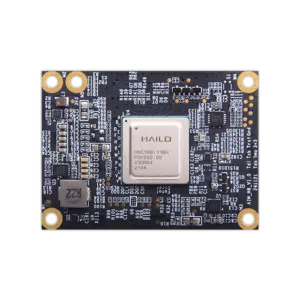Seamless AI Integration with Geniatech's M.2 and B2B AI Accelerator Options
Seamless AI Integration with Geniatech's M.2 and B2B AI Accelerator Options
Blog Article
Seamless AI Integration with Geniatech's M.2 and B2B AI Accelerator Options
Synthetic intelligence (AI) is changing at a rate that issues industries to undertake more efficient and effective solutions. One of the cornerstones of the development are AI ai module developed to handle complicated deep understanding projects without eating excessive power. High-performance, low-power AI accelerators are paving the way for better systems to infiltrate varied industries, from healthcare and money to automotive and side computing.

The Need for High-Performance, Low-Power AI Solutions
Strong understanding types are more powerful than ever, but in addition they need substantial computational resources. Education and operating these designs need electronics that can process immense amounts of data efficiently. However, old-fashioned processors usually fall short in conference the energy effectiveness and rate necessary for real-time AI applications. This space has led to a spike in need for AI accelerators that guarantee powerful while being energy-conscious.
For industries depending on efficient AI implementation, these accelerators signify a critical solution. Products and methods offering these parts can deliver quick insights without wearing power reserves, allowing smooth integration in to resource-constrained environments. This change toward managing computational energy with energy efficiency is driving greater adoption across cloud, on-premises, and side research infrastructures.
Key Functions That Establish Contemporary AI Accelerators
Energy Efficiency Without Limiting Energy
Low-power use is really a trait that sets these accelerators apart. They let programs to work for lengthier times, especially in cellular or side purposes wherever power assets are limited. By optimizing power usage, these accelerators aren't just green but additionally cost-effective for businesses.
Optimized for AI Workloads
Unlike traditional processors, AI accelerators are designed to generally meet the particular needs of serious understanding workloads. Including tasks like item recognition, language processing, and real-time analytics. A number of these accelerators function highly parallel architectures, which allow parallel processing of information to execute responsibilities faster and with higher precision.
Scalability for Any Deployment
Scalability is still another standout function of those solutions. Whether you're deploying AI versions in substantial information centers or integrating them into compact side devices, these accelerators are designed to handle various computational wants without compromising efficiency.
Small Types for Varied Programs
Developments in chip style have produced AI accelerators small without reducing their power. This opens pathways for integration into devices across sectors like healthcare (wearable devices), retail (smart kiosks), and automotive (self-driving vehicles). That flexibility pushes ownership across industries.
Real-World Programs Driving Adoption
Healthcare
From detecting conditions to controlling patient data, AI in healthcare needs strong computational power. AI accelerators help real-time knowledge evaluation, enabling faster and more precise diagnostics while conserving process energy.
Finance
Examining exchange knowledge and detecting defects for fraud recognition is computationally intensive. AI accelerators allow financial institutions to operate deep learning models quicker, improving the rate and accuracy of the security systems.
Smart Towns

For intelligent cities deploying AI for surveillance, traffic management, and power conservation, AI accelerators provide the mandatory energy and efficiency. Their capacity to operate on side units guarantees real-time information processing for increased downtown management.
Autonomous Vehicles
Self-driving engineering is probably one of the very most demanding applications of heavy learning. AI accelerators supply the computational power needed to process data from cameras and sensors in real-time, ensuring cars make safe and appropriate decisions.
The Base Line
The change toward high-performance, low-power options symbolizes the ongoing future of deep understanding advancements. These accelerators encourage industries to push the boundaries of AI integration while ensuring energy effectiveness and detailed scalability. Their usefulness across groups underscores their influence as equally enablers of better technologies and people of cost-effective solutions.
By conference the needs of real-time analytics and edge computing, these accelerators are changing the AI landscape, which makes it a reachable, sustainable, and transformational engineering for industries across the globe. If your concentration is on effective AI arrangement, low-power AI accelerators are an essential aspect in this ongoing invention revolution. Report this page